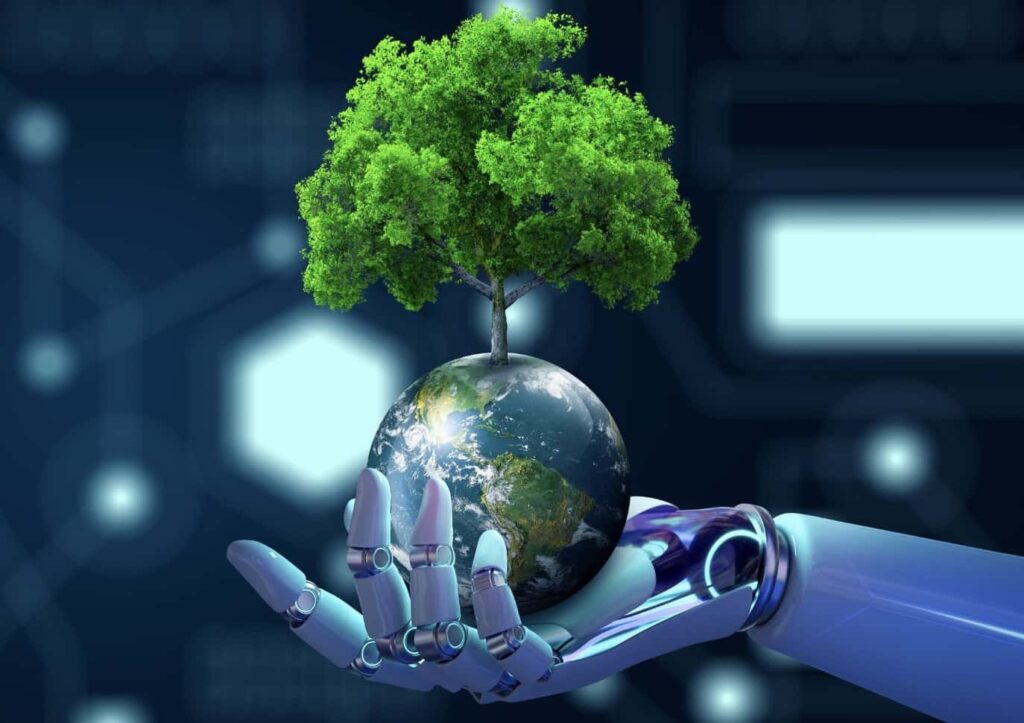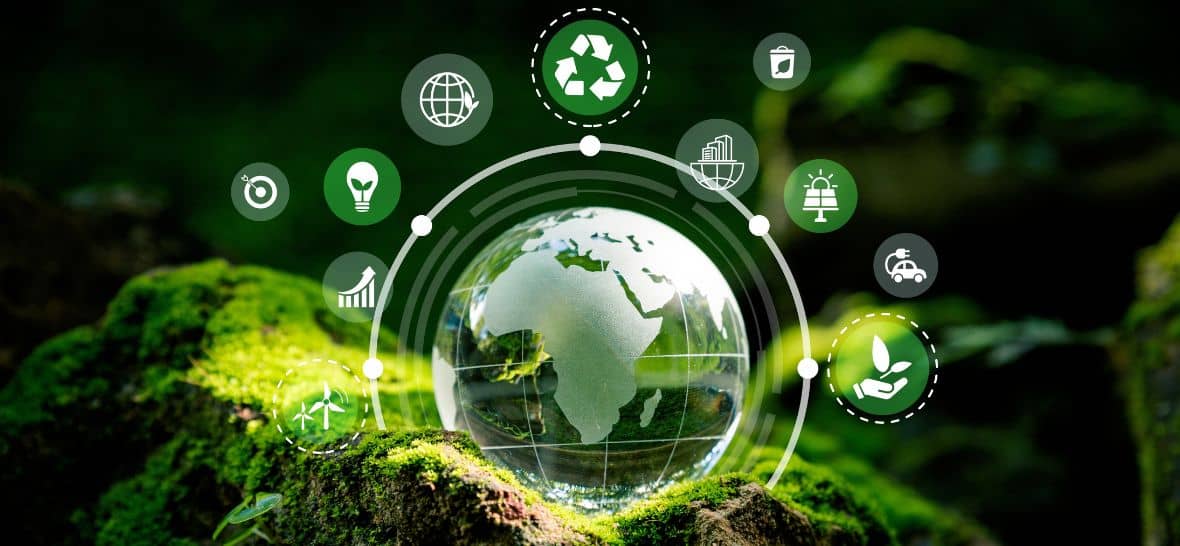Relentless digitisation comes at a cost to the environment. Manufacturing tech devices involves huge energy consumption. This equipment also consumes many materials, including rare earth elements. Mining these materials pollutes, destroys habitats, and causes social displacement. Operating the IT infrastructure multiplies the loan of the environment manifold. An average smartphone generates the equivalent of 85 kilograms of carbon dioxide during its first year. This load is equal to driving a car for 155 miles. An average data centre consumes the equivalent energy of what 50,000 normal homes consume. The ever-increasing e-waste adds to the pollution.
Stakeholders focus on sustainable IT or Green IT to mitigate the ecological impact of IT.
What is Sustainable IT?
Sustainable IT involves adopting approaches that minimise the environmental impact of tech adoption.
It encompasses:
- Reducing components that harm the environment when manufacturing tech products.
- Managing energy and production costs during the production and operation of IT infrastructure. An example is opting for green energy choices.
- Reusing infrastructure components to deliver multiple services.
- Optimising resource usage by configuring to do more with less.
- Focus on energy efficiency throughout product life-cycle.
- Optimising compute workloads to reduce energy consumption.
- Tweaking enterprise-level policies to promote sustainable practices. For instance, data policies regarding redundancy, ingress, and egress impact resource consumption. Storing unnecessary data incurs costs and consumes resources such as servers and bandwidth.
These principles form the core of the ESG agenda. ESG is not yet mandatory. But it has nevertheless become inevitable for enterprises due to strong stakeholder pressure.
Green IT in action
Enterprises can achieve their Sustainable IT or Green IT goals in many ways.
The easiest way is by deploying energy-efficient hardware. Energy Star-certified computers improve efficiency by 30% on average. Consider a hypothetical case where all US servers meet Energy Star standards. The savings will be $1 billion in energy costs and a yearly reduction of 8.2 million tons of greenhouse gas emissions.
Developing smaller and lighter devices with higher computing power improves sustainability. For example, a standard desktop PSU can reach 175 watts of peak consumption, while a laptop uses only 60 watts at peak.

At the operational level, moving to the cloud contributes to sustainable IT. The cloud’s ability to optimise resources leads to little or no wasted workloads. But enterprises have to guard against overprovisioning, be it on-premises or cloud. Many IT managers tend to overprovision due to concerns around uptime. The energy to power the extra resources exacts an environmental cost.
Another popular green IT practice is server consolidation through virtualisation. Running multiple virtual systems on a single server reduces hardware and energy consumption.
Many significant Green IT initiatives involve innovative thinking and innovation. One example is channelling the energy generated by data centres to productive uses. For instance, Hitachi Energy has developed systems that use the heat generated by data centres to power greenhouses.
Investments in Sustainable IT are increasing worldwide. Promising concepts include hydrogen fuel cells and modular nuclear reactors for data centres.
Embracing the circular economy model
The traditional linear economic model follows a “take-make-waste.” The alternate circular economy aims to keep products and materials in use for as long as possible.
At present, most companies replace tech products when a defect occurs. The circular economy model requires policies that promote repairs and reuse of tech products. It also promotes recycling instead of a “use and throw” approach.
At a macro level, a key component of the circular economy model is sharing instead of everyone buying devices. At the enterprise level, this translates to shared workspaces and hot-desking.
The cost impact of sustainable IT
Sustainable IT is not just an ethical or public relations initiative. It is a smart business move. Initiatives to reduce energy consumption and improve hardware efficiency improve the bottom line. The cloud likewise offers great savings and the opportunity to convert capital costs into easily attributable operational costs. Virtualisation eliminates servers, reducing energy costs, rental costs, and cooling costs. Such initiatives ease the pressure on margins and make the enterprise more competitive.
Businesses can reap even more benefits through indirect savings.
Green IT improves brand image. Conscious customers prefer to deal with companies committed to sustainability. Many investors, suppliers, and potential employees are also eco-conscious. They, too, prefer companies that adopt sustainable IT practices and demonstrate commitment to ESG goals.
Sustainable IT also reduces regulatory risks. Governments now implement strict environmental regulations. Green IT helps businesses stay ahead of regulations and avoid potential fines or penalties.
The importance of the data-based approach
Approaching IT operations through the sustainability lens improves performance and saves costs. But realising these objectives depends on real-time tracking of key operational metrics.
Managers with ready access to energy consumption information can identify which resource consumes how much energy. Insights on the energy sources allow them to prioritise green energy. They can, for instance, opt for solar energy when viable.
Data analytics identify underutilised or wasted resources, enabling better resource allocation. The Internet of Things (IoT) makes such data-based actions routine. For instance, IoT devices with sensors monitor and optimise energy use in buildings. Smart thermostats adjust heating and cooling based on occupancy.
Live tracking also makes identifying and fixing inefficient systems easier. For instance, looking into granular data may unearth storage systems using higher-than-normal energy. Delving deeper could pinpoint the cause of high energy consumption as the cooling system. The best course of action here is to change or repair the HVAC system. Making changes without understanding the root cause wastes money without eliminating the inefficiencies.
For enterprises, the first step towards the sustainable IT journey is a thorough audit to understand where they stand. Next, managers must reconcile data analytics insights with business exigencies to prioritise initiatives. For some companies, the biggest gains will be from switching to renewable energy. For others, reworking the application architecture or optimising storage may deliver bigger gains.
Regardless of the approach or priorities, a commitment towards Green IT is a win-win approach that benefits all stakeholders. It is also one of the best investment decisions to make today.












